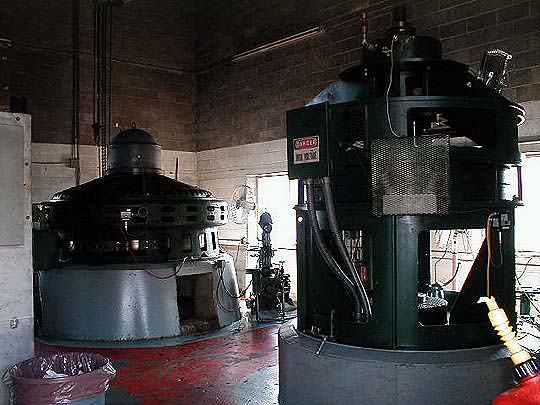The dam has a 400 KW and a 220 KW generator of 1919 vintage quietly producing pollution-free power. Steve Martinson, dam operator, says with the high water of 2002 the dam is grossing 400 dollars a day on the wholesale power market.
The dam's turbines produce the equivalent of 500 horsepower.
On September 8, 2002 he said the water in the reservoir was about 6 inches too high because Amery was letting lots of water go through their dam. But he said if he opened more flood gates to lower the pool quickly he would flood the highway 65 bridge.
A long-time Black Brook area resident, Steve maintains the facility with TLC keeping the structure and spillway clean and operating smoothly.
The power of the Apple turns the rotor winding excited with direct current causing a rotating magnetic field. The magnetic field passes through wires in the stator (the stator winding embedded in the core) producing electricity.
The problem is finding the considerable amount of energy necessary to rotate the shaft at the lowest expense in labor, equipment and in 2003 minimal damage to the environment.



